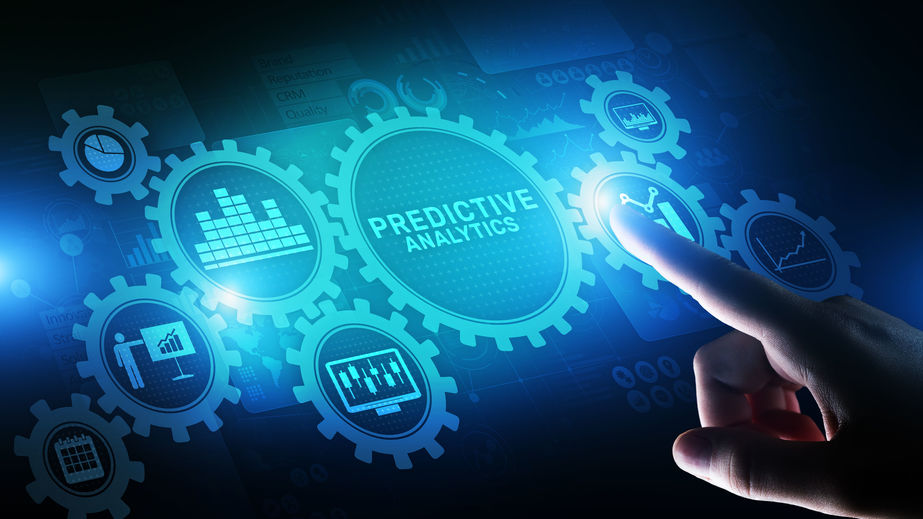In an increasingly competitive and data-driven marketplace, businesses are constantly seeking ways to gain an edge and drive growth. One of the most powerful tools at their disposal is predictive analytics, especially when powered by artificial intelligence (AI). By leveraging AI-driven predictive analytics, organizations can forecast future trends, optimize decision-making, and enhance overall performance. Here’s how AI supports business growth through predictive analytics.

1. Enhanced Decision-Making
AI-powered predictive analytics enables businesses to make data-informed decisions by analyzing historical data and identifying patterns. This insight allows leaders to assess potential outcomes and risks associated with various strategies, leading to more strategic planning.
Example:
Retailers can analyze past sales data to predict future demand for specific products, enabling them to optimize inventory levels and reduce stockouts or overstock situations.
2. Improved Customer Insights
Understanding customer behavior is crucial for business growth. AI can analyze customer data to identify trends and preferences, allowing organizations to tailor their marketing strategies and product offerings accordingly.
Example:
E-commerce platforms can utilize predictive analytics to segment customers based on buying patterns, enabling personalized recommendations and targeted marketing campaigns that enhance customer engagement and increase sales.
3. Optimized Marketing Strategies
AI-driven predictive analytics can enhance marketing effectiveness by forecasting which campaigns are likely to resonate with target audiences. By analyzing past campaign performance, businesses can refine their marketing strategies and allocate resources more effectively.
Example:
Using predictive analytics, companies can determine the optimal time to launch marketing campaigns or promotions based on historical response rates, maximizing engagement and conversion rates.
4. Risk Management
AI can help businesses identify potential risks by analyzing trends and anomalies in data. Predictive analytics enables organizations to proactively address issues before they escalate, safeguarding against financial losses and reputational damage.
Example:
Financial institutions can use predictive models to assess credit risk by analyzing applicants’ historical data, ensuring they make informed lending decisions and minimize defaults.
5. Inventory and Supply Chain Management
Effective inventory management is essential for operational efficiency and customer satisfaction. AI-powered predictive analytics can forecast demand, optimize stock levels, and streamline supply chain operations.
Example:
Manufacturers can leverage predictive analytics to anticipate equipment failures, enabling them to schedule maintenance proactively and minimize downtime, which ultimately supports production efficiency.
6. Product Development and Innovation
AI can facilitate faster and more efficient product development by analyzing market trends and consumer feedback. Predictive analytics helps businesses identify gaps in the market and innovate accordingly.
Example:
Tech companies can analyze user feedback and usage patterns to inform the development of new features or products that meet evolving customer needs, leading to increased satisfaction and loyalty.
7. Employee Performance and Retention
Predictive analytics can also play a crucial role in human resources. By analyzing employee performance data, organizations can identify factors that contribute to turnover and develop strategies to enhance retention.
Example:
Companies can use predictive models to identify at-risk employees based on engagement levels and performance metrics, enabling proactive interventions to boost morale and reduce attrition rates.
8. Financial Forecasting
Accurate financial forecasting is essential for sustainable growth. AI-powered predictive analytics can provide organizations with insights into future revenue, expenses, and cash flow, allowing for more effective budgeting and resource allocation.
Example:
Businesses can leverage predictive analytics to model different financial scenarios based on market conditions, helping them make informed investment decisions and manage resources more effectively.
9. Scalability and Growth Strategy
AI-driven predictive analytics can help organizations assess the viability of new markets or expansion strategies by analyzing historical data and market trends. This insight allows businesses to scale efficiently and effectively.
Example:
A startup looking to enter a new geographic market can use predictive analytics to analyze demographics, purchasing behavior, and local competition, ensuring a well-informed entry strategy.
Conclusion
AI-powered predictive analytics plays a vital role in supporting business growth by providing organizations with the insights needed to make informed decisions, optimize operations, and enhance customer experiences. As businesses increasingly rely on data to guide their strategies, leveraging AI in predictive analytics will become essential for gaining a competitive edge.


No responses yet